The National Research Institute of Maritime Cultural Heritage logo
Conservation of Ceramics Background Image
Conservation of Ceramics
In general, the most common factors of damage for ceramic goods unearthed at the sites on land are due to physical damage and contaminants from the interment or handling process. However, ceramic items recovered from the seafloor is often damaged due to seawater after having been submerged for a prolonged period of time. There is a significant amount of sodium in the insides of ceramics recovered from the sea, and as this sodium crystallizes when it loses moisture upon contact with the air, it causes damage to the ceramics. A process of desalinization is required that involves submerging the items in fresh water to remove the sodium. Also, there are many cases of ceramic vessels becoming a habitat for shellfish and seaweed. These marine plants and animals can become causes of contamination, so the requirements of physical and chemical removal of these foreign substances are something that differs from ceramic goods found on land. The conservation treatment of ceramics follows the order of: Condition analysis before conservation treatment → cleaning → desalinization → drying → bonding and restoration → color adjustment → condition analysis after treatment.
-
STEP 1
Condition analysis before conservation treatment -
STEP 2
Cleaning -
STEP 3
Desalinization
-
STEP 4
Bonding -
STEP 5
Restoration -
STEP 6
Color adjustment
-
STEP 7
Condition analysis after treatment
-

STEP 1
Condition analysis before conservation treatment -
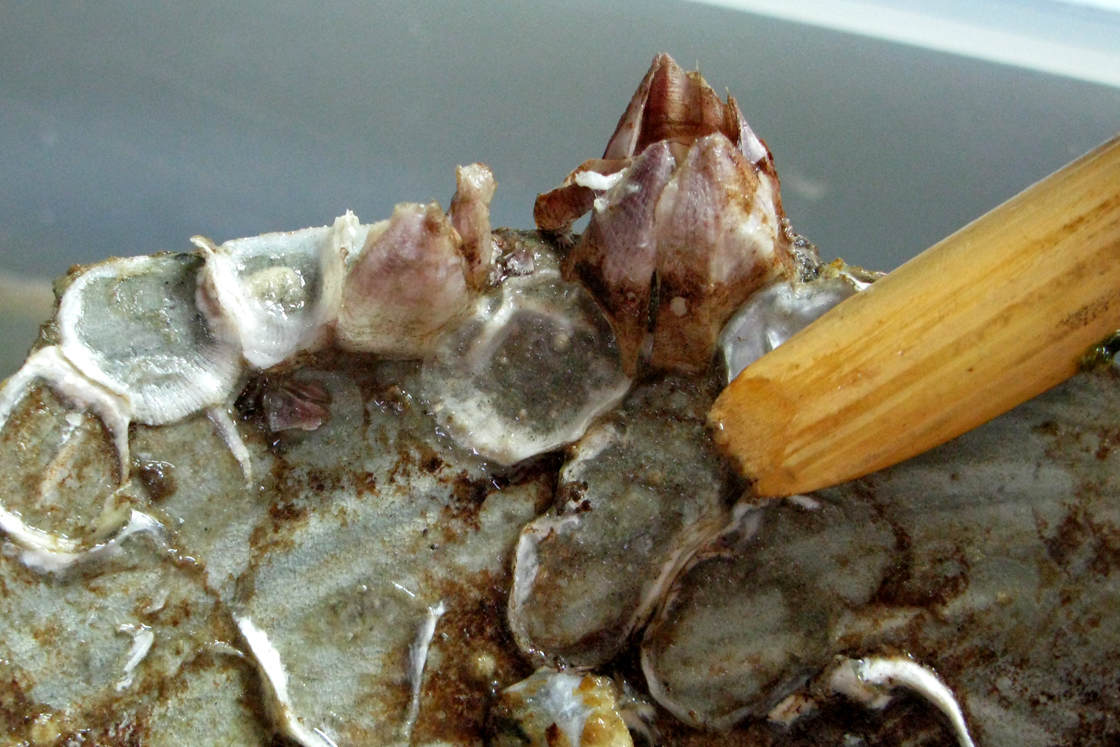
STEP 2
Cleaning -
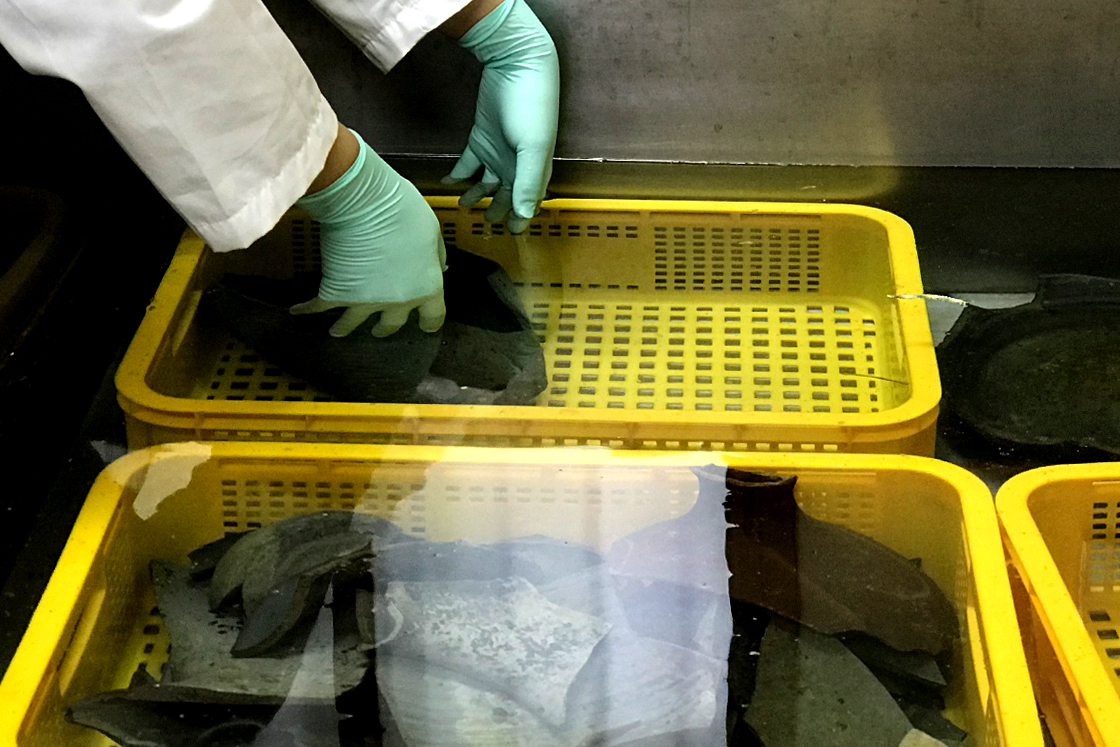
STEP 3
Desalinization -
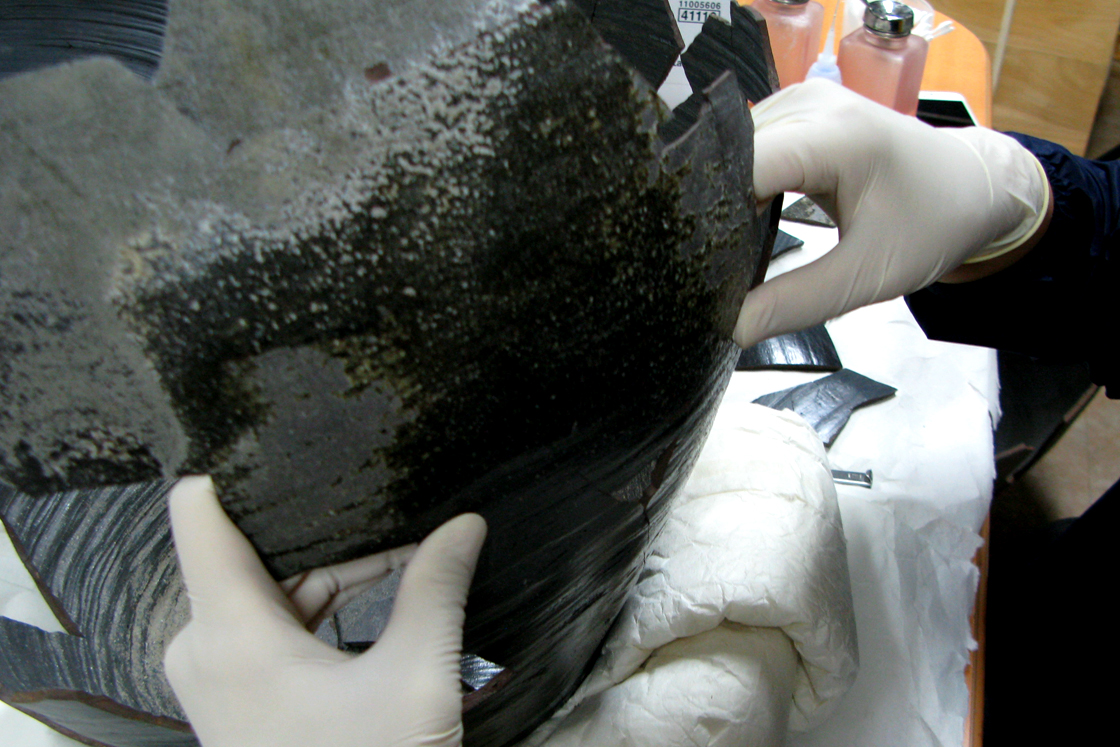
STEP 4
Bonding -
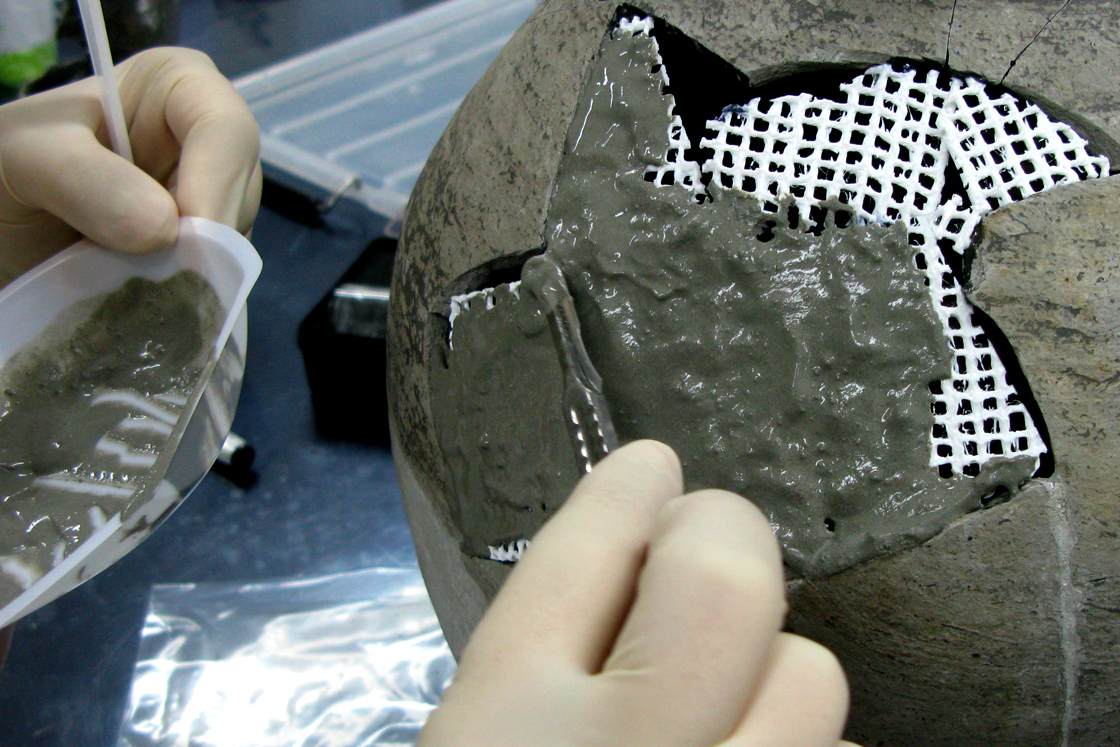
STEP 5
Restoration -
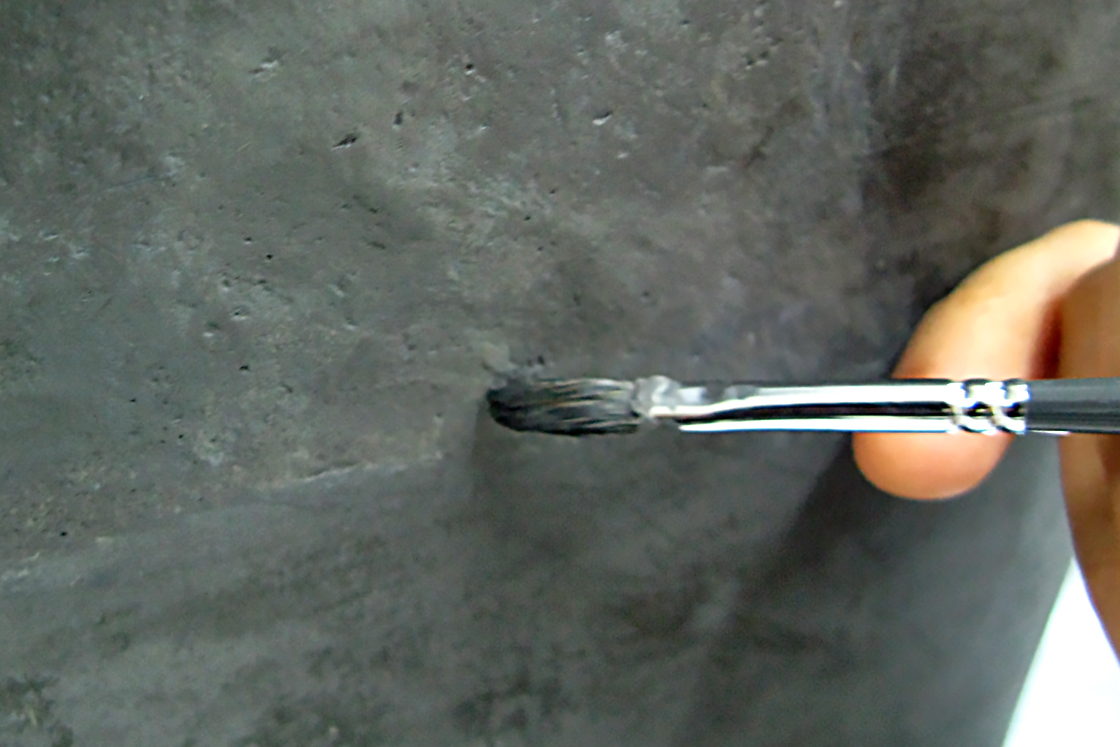
STEP 6
Color adjustment -
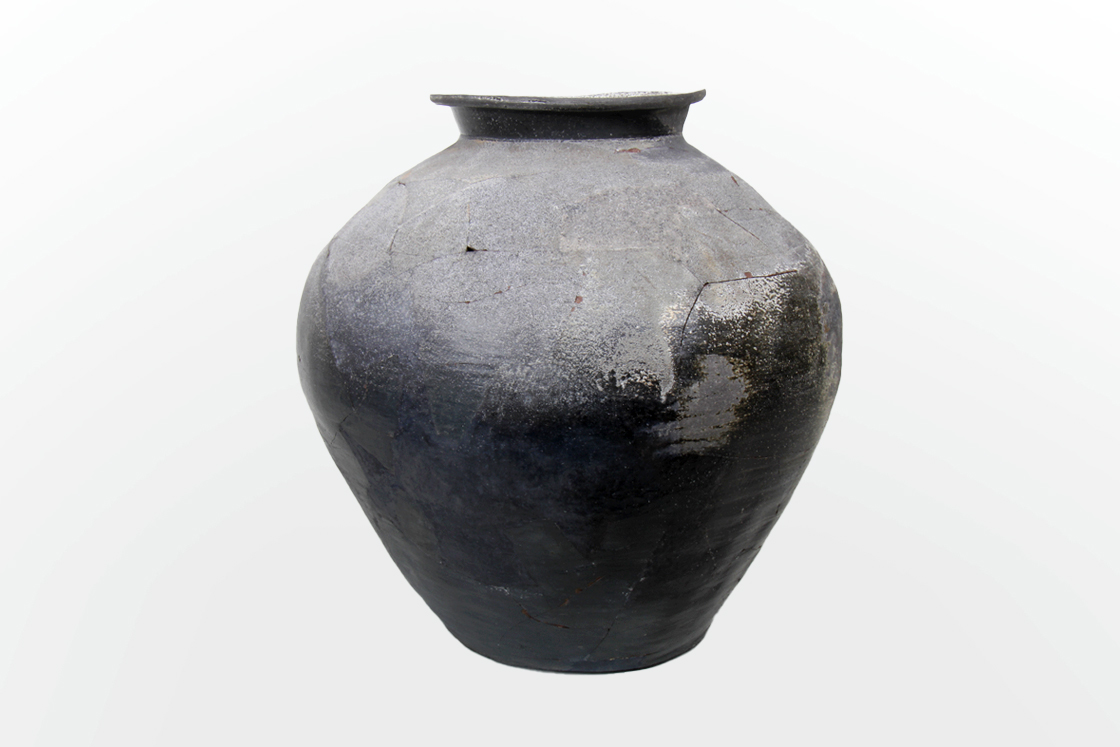
STEP 7
Condition analysis after treatment
-
Administrative Office Heritage Conservation and Collection Management Division
-
Contact 061-270-2090
